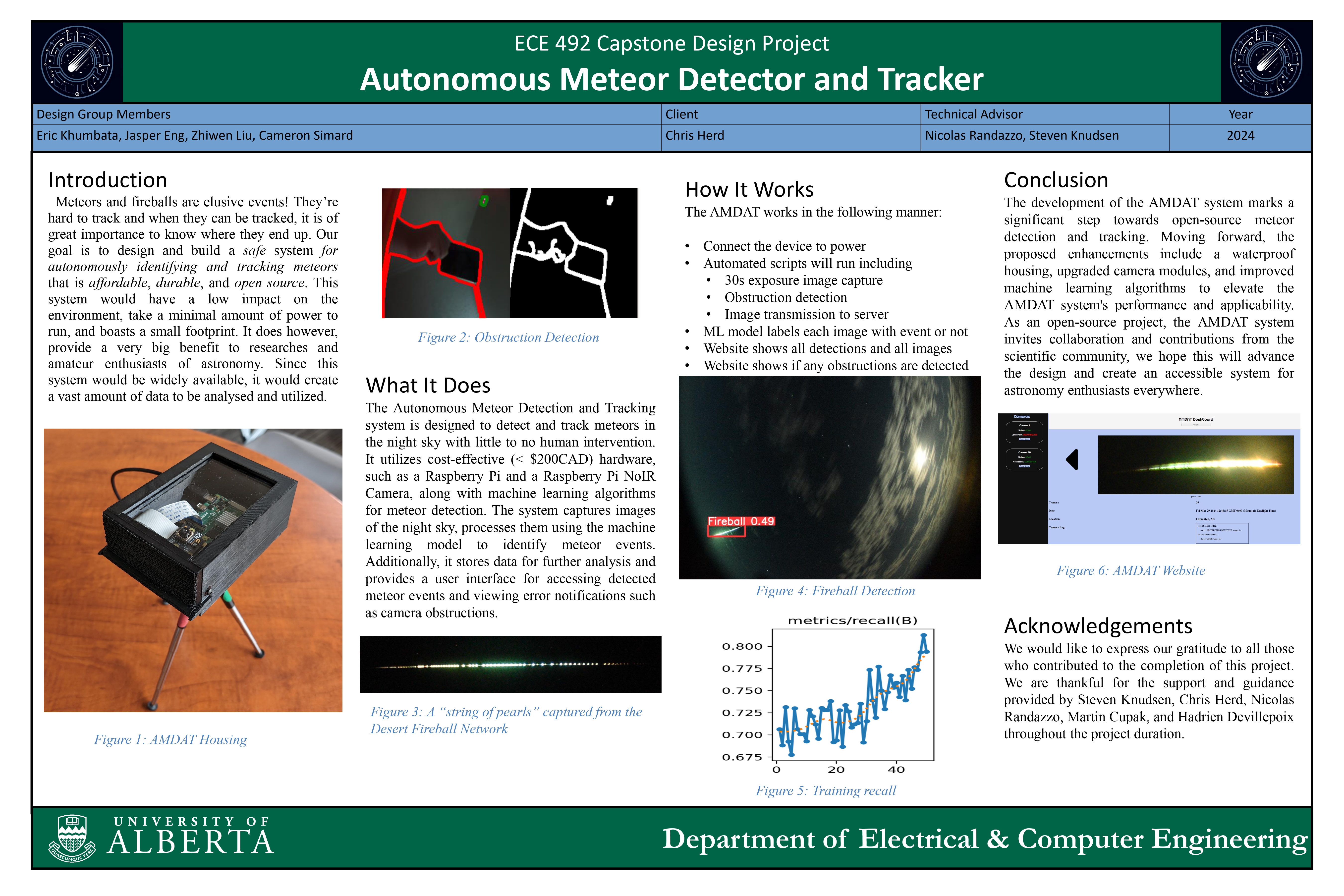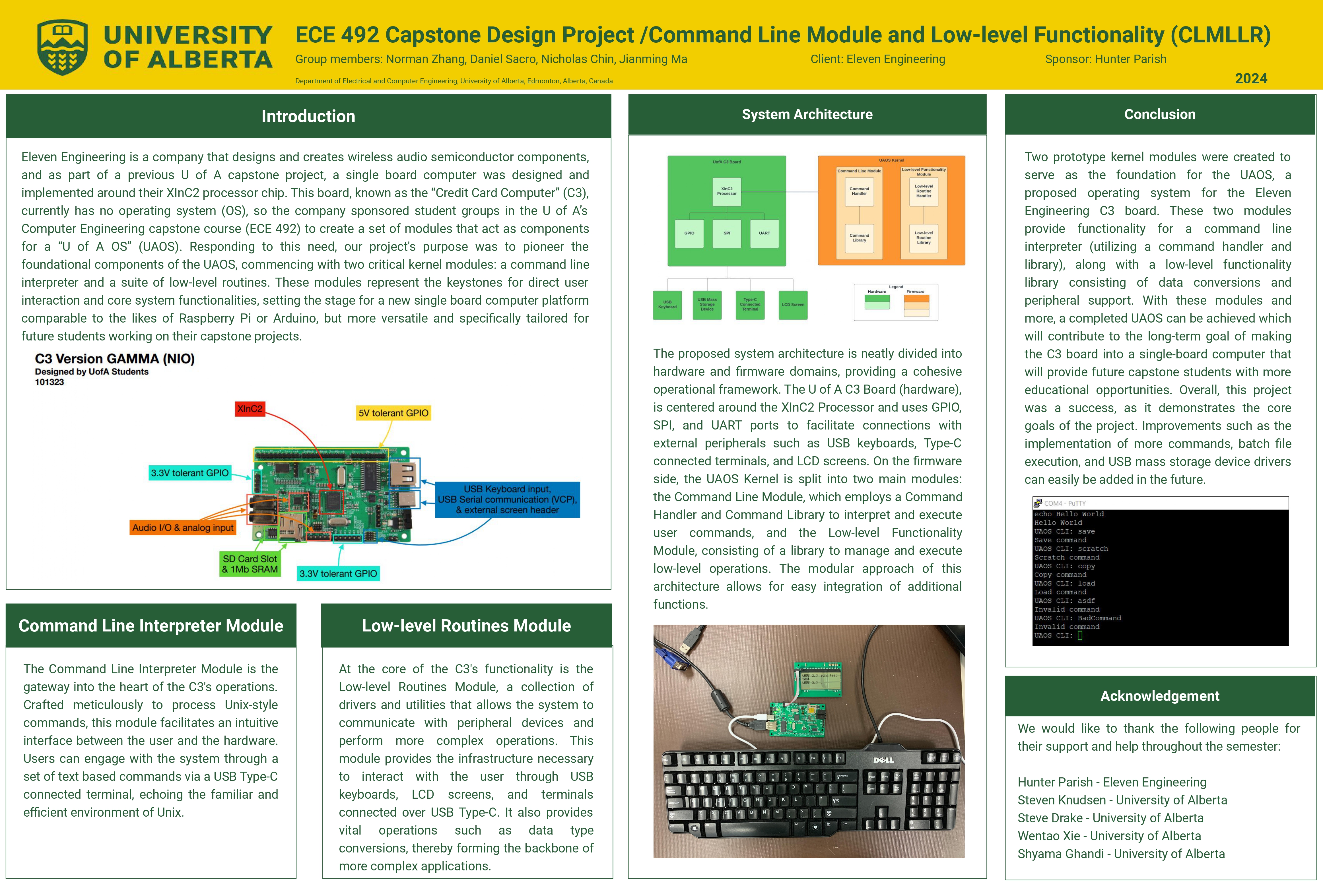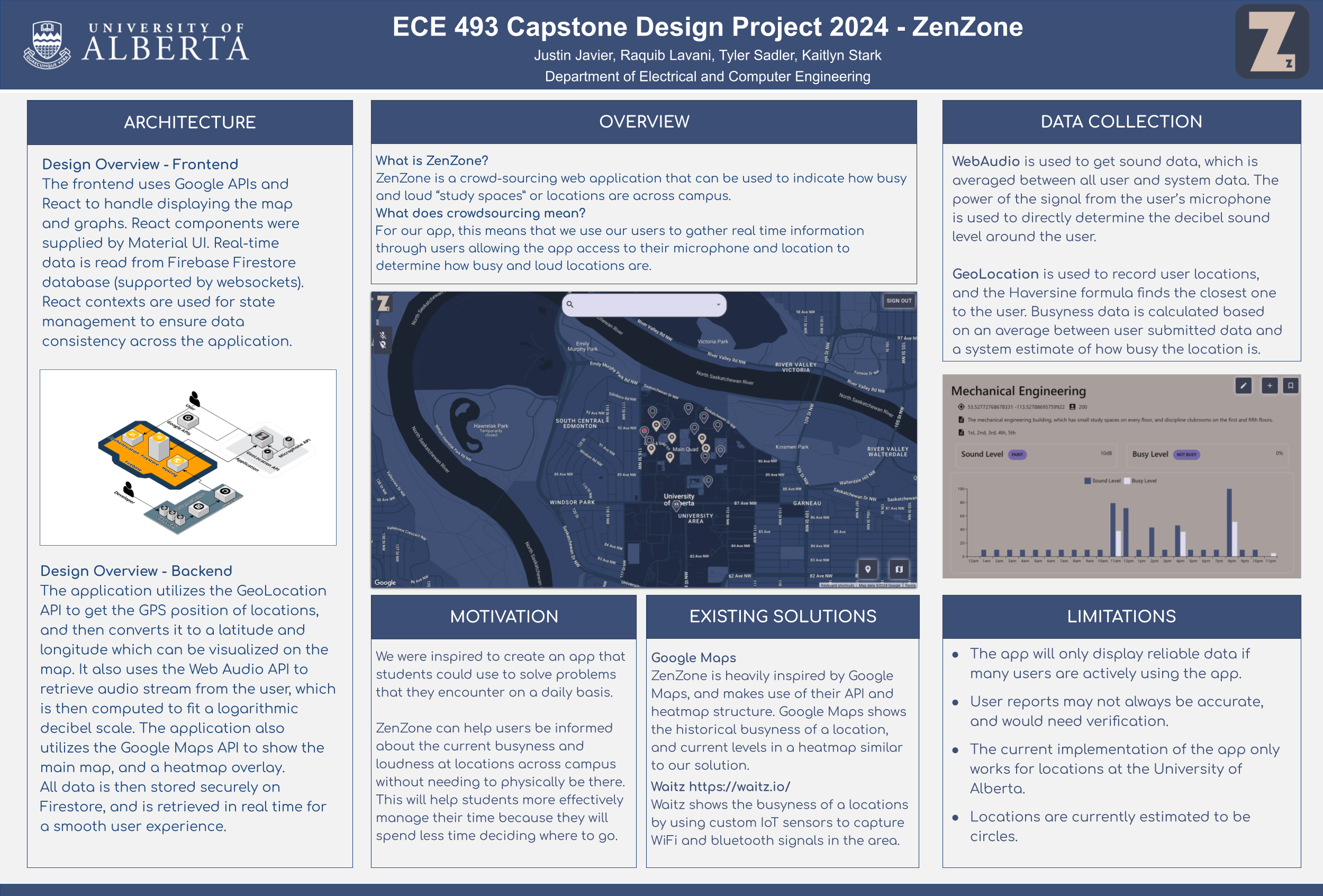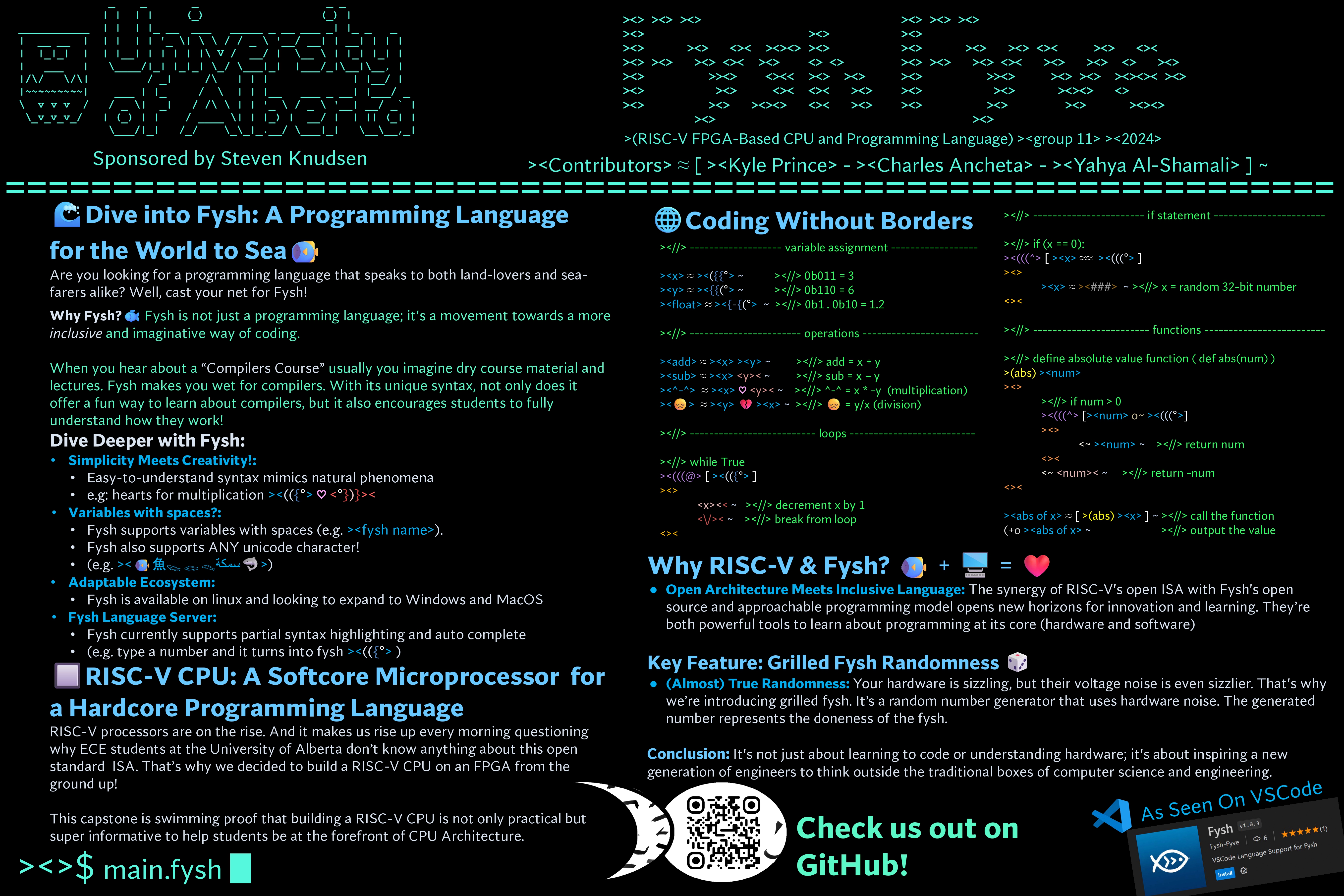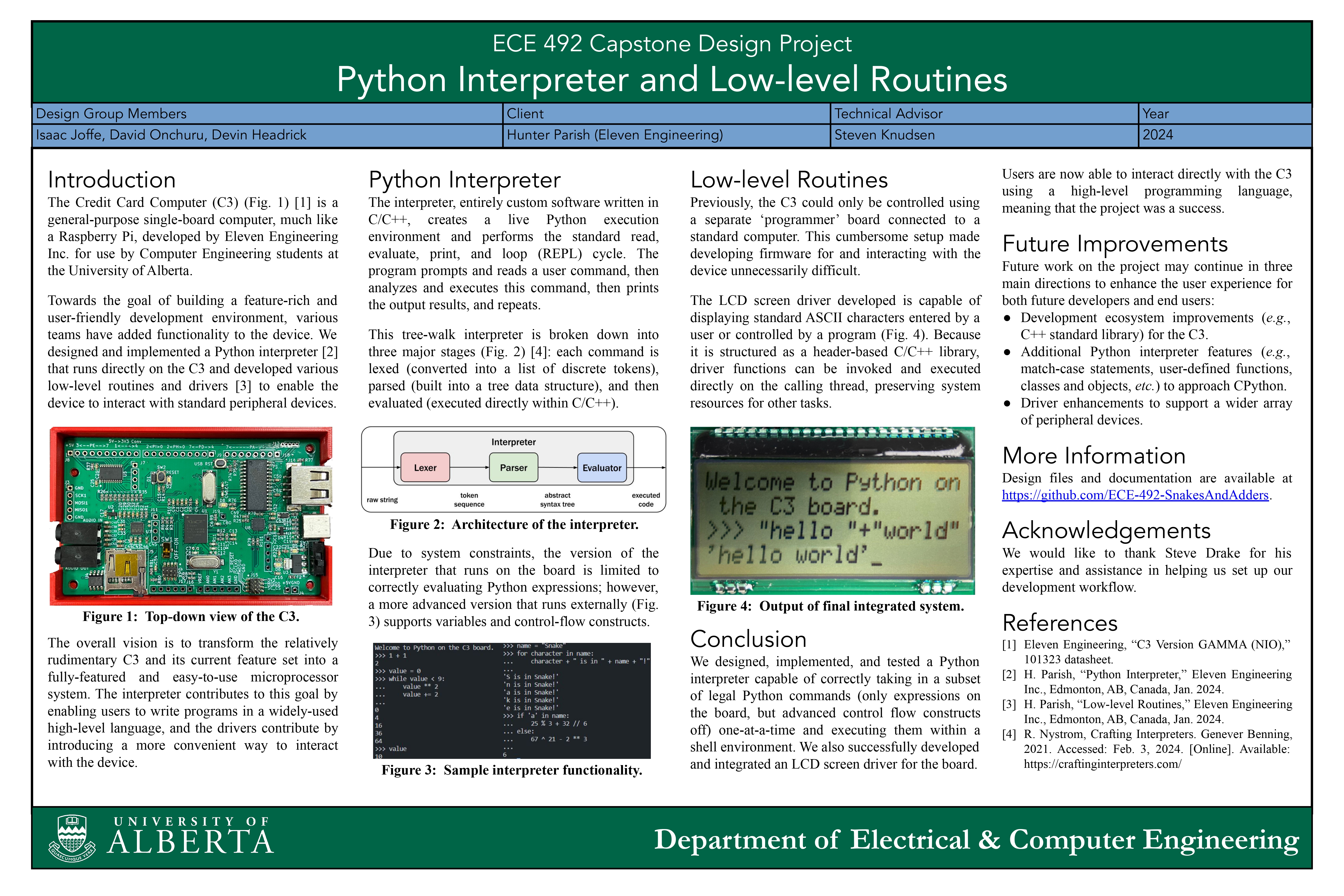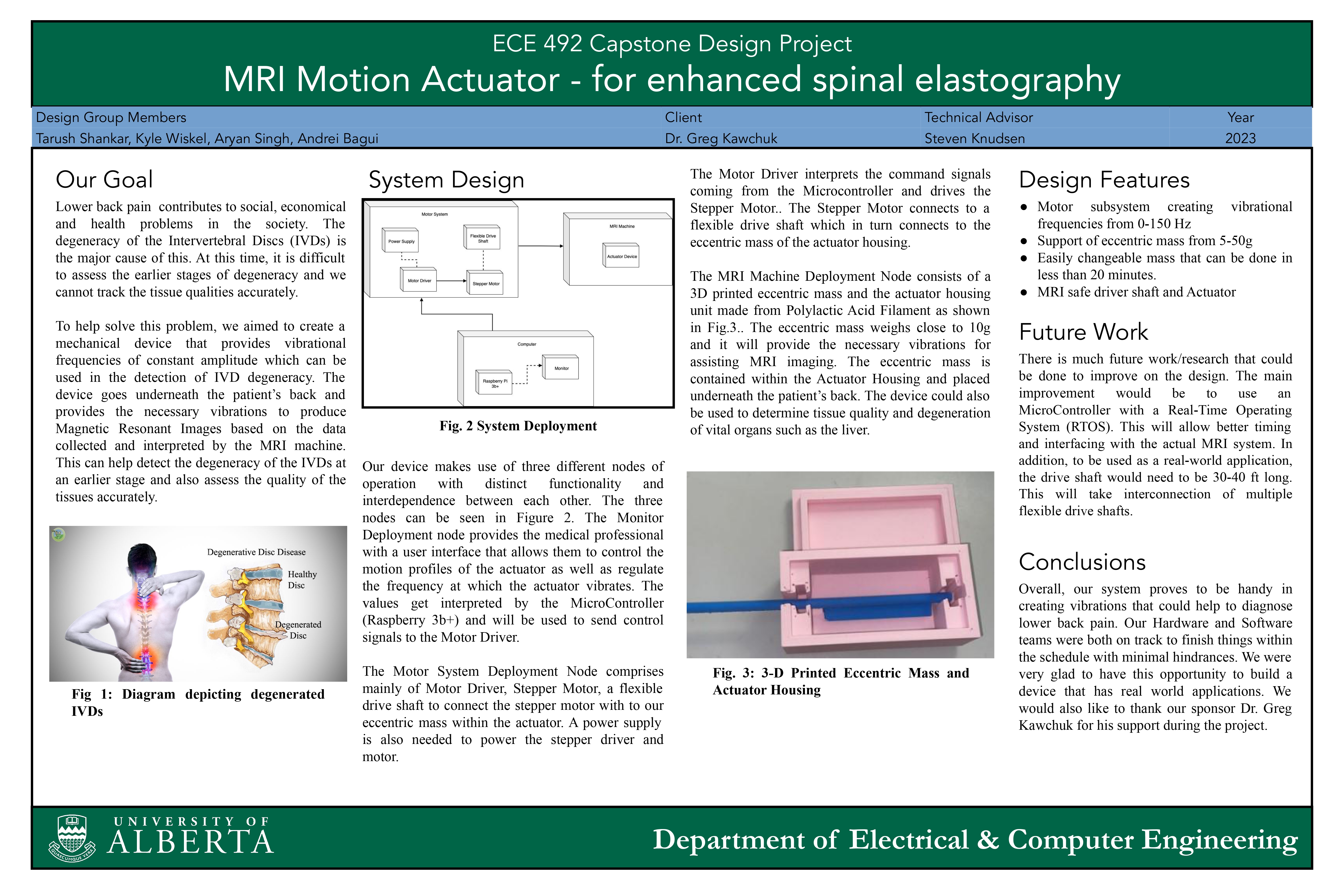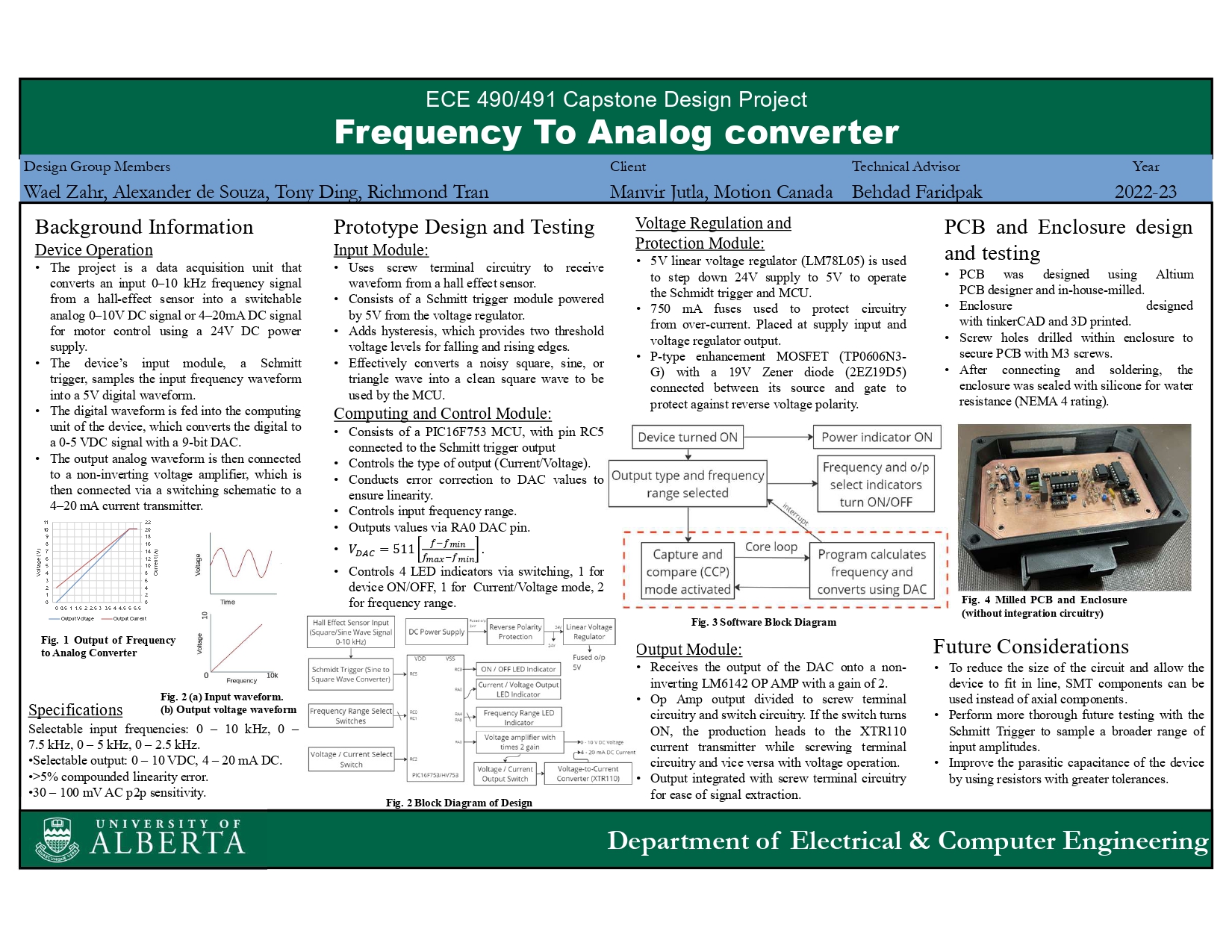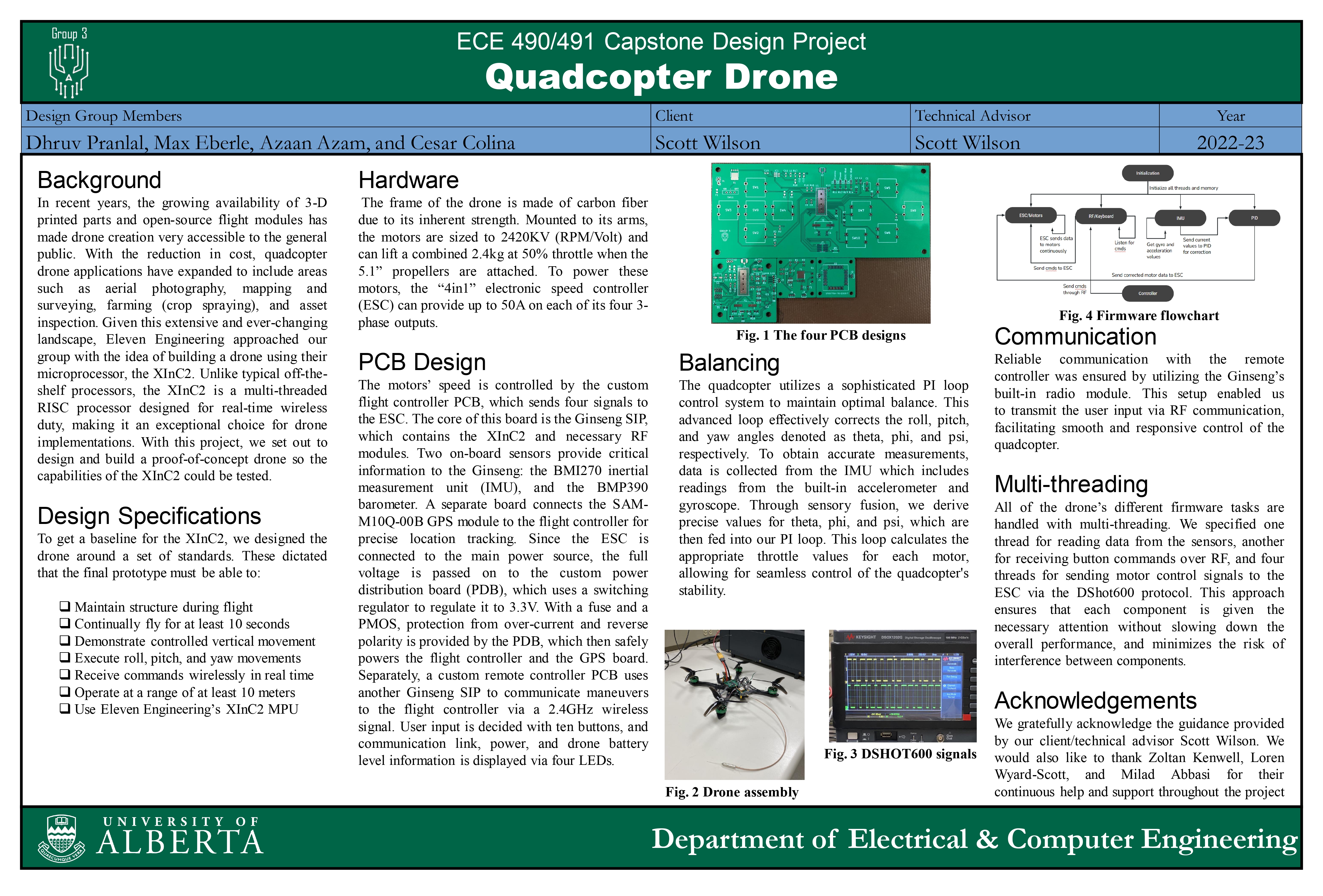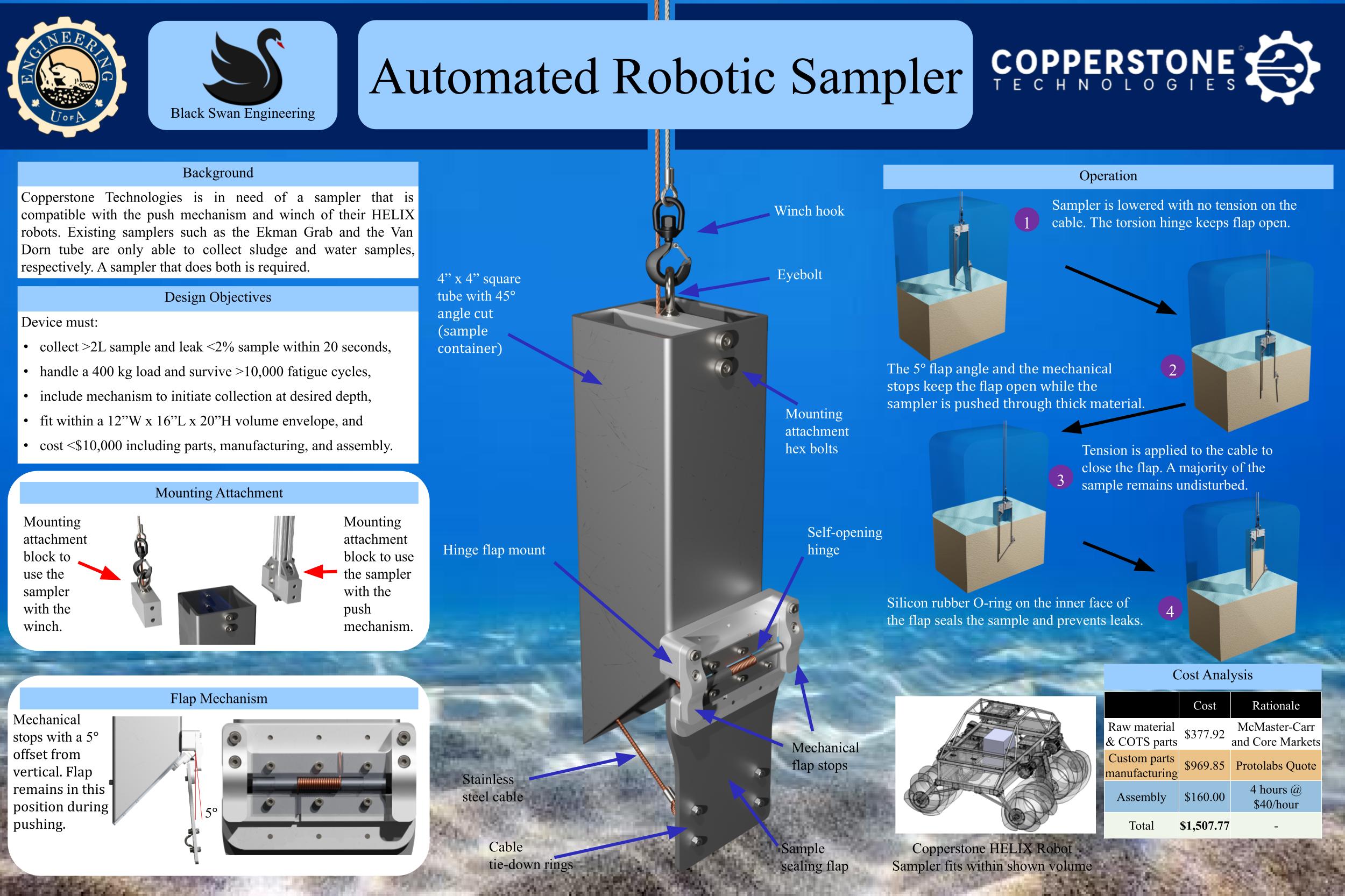Team Members: Eric Khumbata, Jasper Eng, Zhiwen Liu, Cameron Simard
Meteors and fireballs are elusive events! They’re hard to track and when they can be tracked, it is of great importance to know where they end up. Our goal is to design and build a safe system for autonomously identifying and tracking meteors that is affordable, durable, and open source. This system would have a low impact on the environment, take a minimal amount of power to run, and boasts a small footprint. It does however, provide a very big benefit to researches and amateur enthusiasts of astronomy. Since this system would be widely available, it would create a vast amount of data to be analysed and utilized.
Discipline:Computer Engineering
Team Members: Norman Zhang, Daniel Sacro, Nicholas Chin, Jianming Ma
Eleven Engineering is a company that designs and manufactures wireless audio semiconductor components, and as part of a previous UofA capstone project, a single board computer utilizing Eleven’s XInC2 processor was designed and manufactured. This single board computer is known as the “Credit Card Computer” (C3), and currently has no operating system (OS), so the company wanted to implement one called the “UofA OS” (UAOS) by sponsoring UofA’s Computer Engineering capstone course (ECE 492) to create a set of modules that would act as the components for it. The complete version of the UAOS is desired to support a plethora of features such as a memory management unit, a secure digital (SD) file system, and a screen file editor to name a few. However, the main focus of our project was to simply implement only two UAOS kernel modules – one for a command line interpreter and another for various low-level routines.
Discipline:Computer Engineering
Team Members: Justin Javier, Raquib Lavani, Tyler Sadler, Kaitlyn Stark
ZenZone is a web application that shows how busy and loud study spots are across campus. We created this app to help students find quality places to study. We hope to save you from the experience of going from DIEC to ETLC to NREF only to find those places are very loud and have nowhere to sit. Using your device's microphone and GPS we can calculate how busy and loud study spots on campus are.
Discipline:Software Engineering
Team Members: Kyle Prince, Charles Ancheta, Yahya Al-Shamali
Are you looking for a programming language that speaks to both land-lovers and sea-farers alike? Well, cast your net for Fysh! When you hear about a “Compilers Course” usually you imagine dry course material and lectures. Fysh makes you wet for compilers. With its unique syntax, not only does it offer a fun way to learn about compilers, but it also encourages students to fully understand how they work!
Discipline:Computer Engineering
Team Members: Isaac Joffe, David Onchuru, Devin Headrick
The Credit Card Computer (C3) is a general-purpose single-board computer, much like a Raspberry Pi, developed by Eleven Engineering Inc. for use by Computer Engineering students at the University of Alberta. Towards the goal of building a feature-rich and user-friendly development environment, various teams have added functionality to the device. We designed and implemented a Python interpreter that runs directly on the C3 and developed various low-level routines and drivers to enable the device to interact with standard peripheral devices. The overall vision is to transform the relatively rudimentary C3 and its current feature set into a fully-featured and easy-to-use microprocessor system. The interpreter contributes to this goal by enabling users to write programs in a widely-used high-level language, and the drivers contribute by introducing a more convenient way to interact with the device.
Discipline:Computer Engineering
Team Members: Tarush Shankar, Kyle Wiskel, Aryan Singh, Andrei Bagui
This is a mechanical device that provides vibrational frequencies of constant amplitude which can be used in the detection of IVD degeneracy. The device goes underneath the patient's back and provides the necessary vibrations to produce Magnetic Resonant I mages based on the data collected and interpreted by that MRI machine. This could help detect the degeneracy of the IVDs at an earlier stage and also asses the quality of the tissues accurately.
Discipline:Computer Engineering
Team Members: Wael Zahr, Alexander de Souza, Tony Ding, Richmond Tran
This device aims to convert a frequency signal to an analog signal with less than 5 % linearity error. The input frequency signal is a 0 - 10 kHz, 30 - 100mV pk-pk signal from a hall effect sensor. The output analog signal is the standardized 0 - 10VDC and 4 - 20mA DC signal. The device is meant to act as a data acquisition unit to be used in industrial applications, such as motor control. In our case, the frequency signal is from a hall effect sensor. The design consists of four sequential blocks and is powered by a 24VDC power supply. First, the input frequency signal is inputted into a Schmitt trigger which will convert the signal into a 5V perfect square wave of the same frequency, to be fed into the computing unit, which will output a corresponding 0 - 5 VDC. The voltage is then amplified by 2 with the use of a voltage op amp, achieving a 0 - 10 VDC output. If current is the selected output type, the 0 - 10V signal is switched into inputting into the current transmitter, creating an output current loop of 4 - 20 mA DC.
Discipline:Electrical Engineering
Team Members: Dhruv Pranlal, Max Eberle, Azaan Azam, Cesar Colina
In recent years, the growing availability of 3-D printed parts and open-source flight modules has made drone creation very accessible to the general public. With the reduction in cost, quadcopter drone applications that have expanded to include areas such as aerial photography, mapping and surveying, farming (crip spraying), and asset inspection. Given this extensive and ever-changing landscape, Eleven Engineering approached our group with the idea of building a drone using their XInC2 microprocessor. Unlike typical off-the-shelf processors, the XInC2 is a multi-threaded RISC processor designed for real-time wireless duty, making it an exceptional choice for drone implementations. With this project, we set out to design and build a proof-of-concept drone so the capabilities of the XInC2 could be tested.
Discipline:Electrical Engineering
Team Members: Newton Obwocha, Hung Duong Phuong, Jagdeep Mann, Maninder Bansal, Sichun Xu
This was a project for Copperstone Technologies, a robotics company based in Edmonton, Alberta. They were in need of a sampler that is compatible with the push mechanism and winch of their HELIX robots. Existing samplers such as the Ekman Grab and the Van Dorn tube are only able to collect sludge and water samples, respectively. A sampler that does both is required.
Discipline:Mechanical Engineering
Team Members: Stephen Just, Mason Strong, Stefan Martynkiw
To produce a comprehensive and performant graphics platform capable of outputting 640x480 video with a DE2 board. This video can have 256 on-screen colours and a maximum frame rate of 60fps. By providing several operations in hardware, our platform achieves significantly faster performance than could be achieved in software alone. The platform can be combined with other components to extend its capabilities
Discipline:Computer Engineering
Explore
Explore projects from other disciplines!
